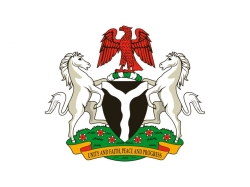
Zamfara State, located in the North-West geopolitical zone of Nigeria, is known for its rich cultural heritage, agricultural potential, and substantial deposits of solid minerals, including gold. Established in 1996, Zamfara is one of Nigeria’s younger states but holds strategic importance in agriculture, mining, and Islamic scholarship.
Administratively, Zamfara State is divided into 14 Local Government Areas (LGAs). Each LGA serves as a critical unit of governance, development, and socio-economic coordination, playing a key role in grassroots engagement, local infrastructure, public services, and economic planning.
This article presents an in-depth look into the LGAs of Zamfara State, including their headquarters, key features, economic activities, and developmental relevance.
Overview of Zamfara State
-
Capital: Gusau
-
Date Created: October 1, 1996
-
Slogan: Farming is Our Pride
-
Region: North-West Nigeria
-
Main Languages: Hausa, Fulfulde, Kanuri, English
-
Number of LGAs: 14
-
Major Economic Activities: Agriculture, livestock rearing, gold mining, trading, and leatherwork
Full List of Local Government Areas (LGAs) in Zamfara State
Here’s the complete list of LGAs in Zamfara State along with their administrative headquarters:
| S/N | LGA Name | Headquarters |
|---|---|---|
| 1 | Anka | Anka |
| 2 | Bakura | Bakura |
| 3 | Birnin Magaji | Birnin Magaji |
| 4 | Bukkuyum | Bukkuyum |
| 5 | Bungudu | Bungudu |
| 6 | Gummi | Gummi |
| 7 | Gusau | Gusau |
| 8 | Kaura Namoda | Kaura Namoda |
| 9 | Maradun | Maradun |
| 10 | Maru | Maru |
| 11 | Shinkafi | Shinkafi |
| 12 | Talata Mafara | Talata Mafara |
| 13 | Tsafe | Tsafe |
| 14 | Zurmi | Zurmi |
Key Features and Economic Activities of LGAs in Zamfara State
1. Anka
-
Known for artisanal gold mining activities.
-
Rich in natural minerals including gold, lead, and zinc.
-
Engages in farming and animal husbandry.
2. Bakura
-
Agricultural hub with large-scale production of sorghum, millet, and groundnuts.
-
Features irrigation farming and seasonal markets.
-
Culturally vibrant with annual festivals and durbars.
3. Birnin Magaji
-
Center for dry-season farming and cattle rearing.
-
Important in onion and tomato production.
-
Hosts traditional rulers and community leadership councils.
4. Bukkuyum
-
Gold-rich region with both small and medium-scale mining.
-
Strong in cattle grazing, millet, and maize production.
-
Faces security challenges that affect mining activities.
5. Bungudu
-
Close proximity to Gusau, making it semi-urban.
-
Produces vegetables and cereals with access to commercial markets.
-
Hosts local trade fairs and weekly rural markets.
6. Gummi
-
Largest LGA by landmass in Zamfara State.
-
Major producer of rice, cowpea, and cotton.
-
Vibrant livestock market with Fulani pastoralist settlements.
7. Gusau
-
Capital and most urbanized LGA in the state.
-
Administrative, commercial, and educational center.
-
Home to the Zamfara State Government House and Federal University Gusau.
8. Kaura Namoda
-
Key transport hub with rail links to other parts of Nigeria.
-
Economic activities include farming, trading, and tanning.
-
Hosts one of the state's largest livestock markets.
9. Maradun
-
Major producer of sorghum, millet, sesame, and groundnuts.
-
Known for large farmlands and irrigation projects.
-
Faces periodic flooding which affects agriculture.
10. Maru
-
One of the richest LGAs in solid minerals like gold, lead, and barite.
-
Dominated by mining and agribusiness.
-
Strategic location for mineral exploration investments.
11. Shinkafi
-
Shares borders with Niger Republic, boosting cross-border trade.
-
Noted for cattle markets and cross-border pastoralism.
-
Known for agricultural produce such as onions, beans, and rice.
12. Talata Mafara
-
Home to the Federal Polytechnic Talata Mafara.
-
Agricultural stronghold for rice, maize, and vegetable farming.
-
Hosts irrigation schemes powered by nearby rivers.
13. Tsafe
-
Known for pottery, leatherwork, and blacksmithing.
-
Agriculture is dominant with cultivation of beans and grains.
-
Faces ecological challenges like erosion and desertification.
14. Zurmi
-
Agricultural powerhouse producing yam, maize, tomatoes, and onions.
-
Known for one of the largest onion markets in northern Nigeria.
-
Experiences seasonal migrant farming.
Importance of LGAs in Zamfara State Development
The LGAs in Zamfara State play a pivotal role in:
✅ Local economic planning and food security
✅ Gold mining regulation and artisan empowerment
✅ Cross-border trade facilitation
✅ Cultural preservation and religious scholarship
✅ Grassroots governance and community development
✅ Conflict resolution and environmental management
FAQs on LGAs in Zamfara State
Q1: How many Local Government Areas are in Zamfara State?
A: There are 14 LGAs in Zamfara State.
Q2: What is the capital of Zamfara State?
A: The capital of Zamfara State is Gusau.
Q3: Which LGAs in Zamfara are known for gold mining?
A: Anka, Maru, and Bukkuyum are the most notable LGAs for gold mining.
Q4: What is the main occupation of the people of Zamfara?
A: The primary occupations include farming, livestock rearing, and artisanal mining.
Q5: Which LGA is the largest in Zamfara by landmass?
A: Gummi LGA is the largest by landmass.
Q6: Does Zamfara State have any higher institutions?
A: Yes, institutions like Federal University Gusau and Federal Polytechnic Talata Mafara are located in the state.
Conclusion
Zamfara State, despite facing security and environmental challenges, remains a land of immense agricultural and mineral potential. Its 14 Local Government Areas are critical engines of development, economic diversification, and cultural preservation.
From the mining zones of Anka and Maru to the fertile farmlands of Talata Mafara and Zurmi, each LGA contributes uniquely to Zamfara’s identity as a state deeply rooted in tradition, resilience, and economic promise.
Understanding these LGAs offers valuable insight for investors, policymakers, development partners, and researchers aiming to engage with the real potential of Nigeria’s North-West.
